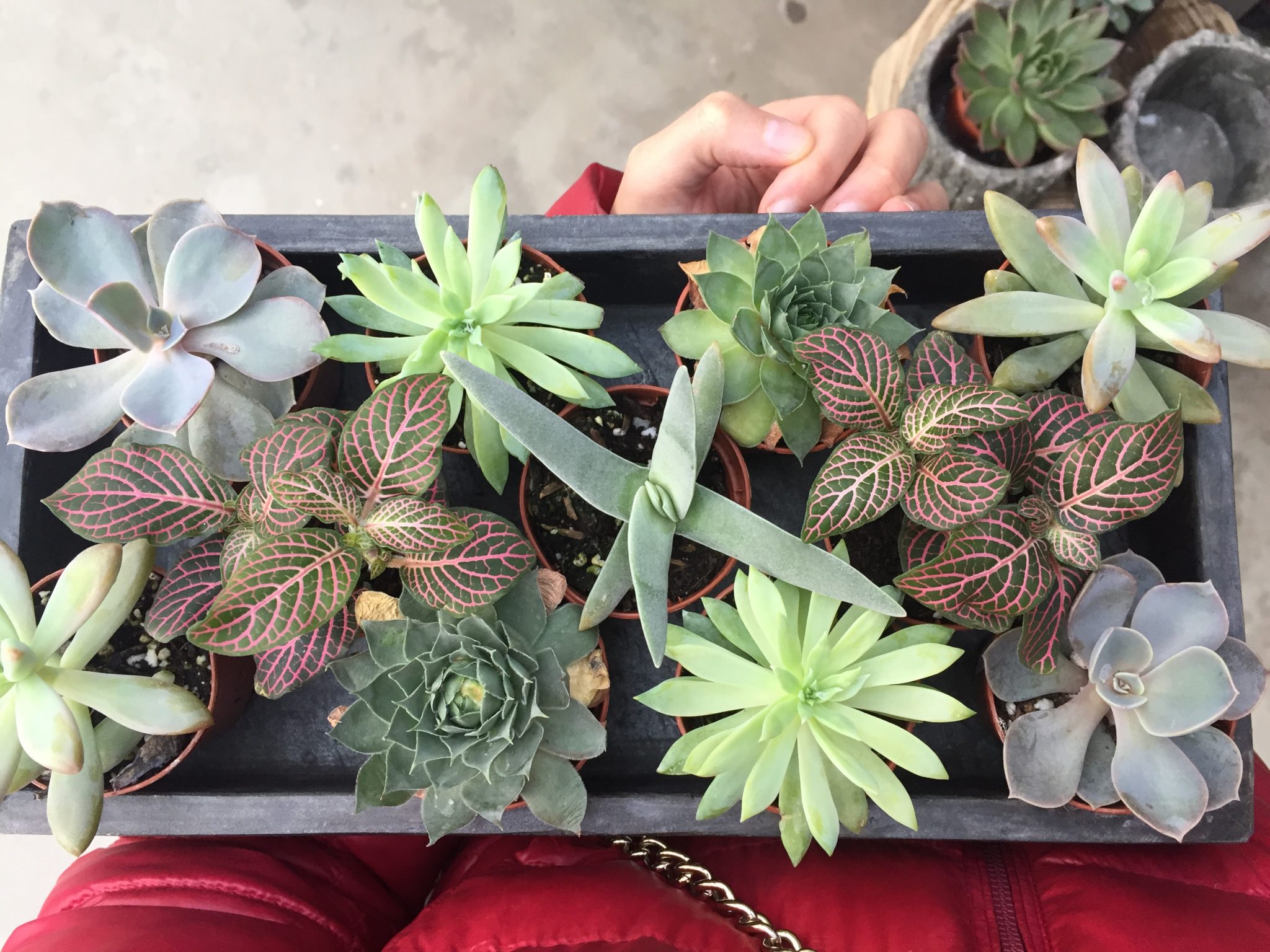I’m a huge fan of keeping indoor plants. I really love the sense of warmth and life they add to a room. They also help me to be more actively engaged in and mindful about my surroundings. Not only can plants be powerful design elements, they help improve indoor air quality and can serve multiple purposes in cooking, or healing. With the endless varieties of plants and display methods available, you shouldn’t have any trouble finding some that catch your eye and match the greenness of your thumb!
Here are some of the plants that I’m currently enjoying in my home. Perhaps it’ll inspire you to bring some into your own space!
1. ZZ-Plant
Light: Low-Medium. Water: Once every 1-2 weeks. Care: Easy.
E-Z-iest plant ever! I came across the ZZ plant when looking for a plant that would be easy to care for and tolerant of low light. I already had a Chinese Evergreen and wanted something a bit different for my office. According to the nursery (and subsequent Google searches), this is one of the hardiest houseplants you can find. It actually prefers when you forget to water it – sold! If it’s ease of care wasn’t good enough, the plant itself has a really cool sculptural vibe.
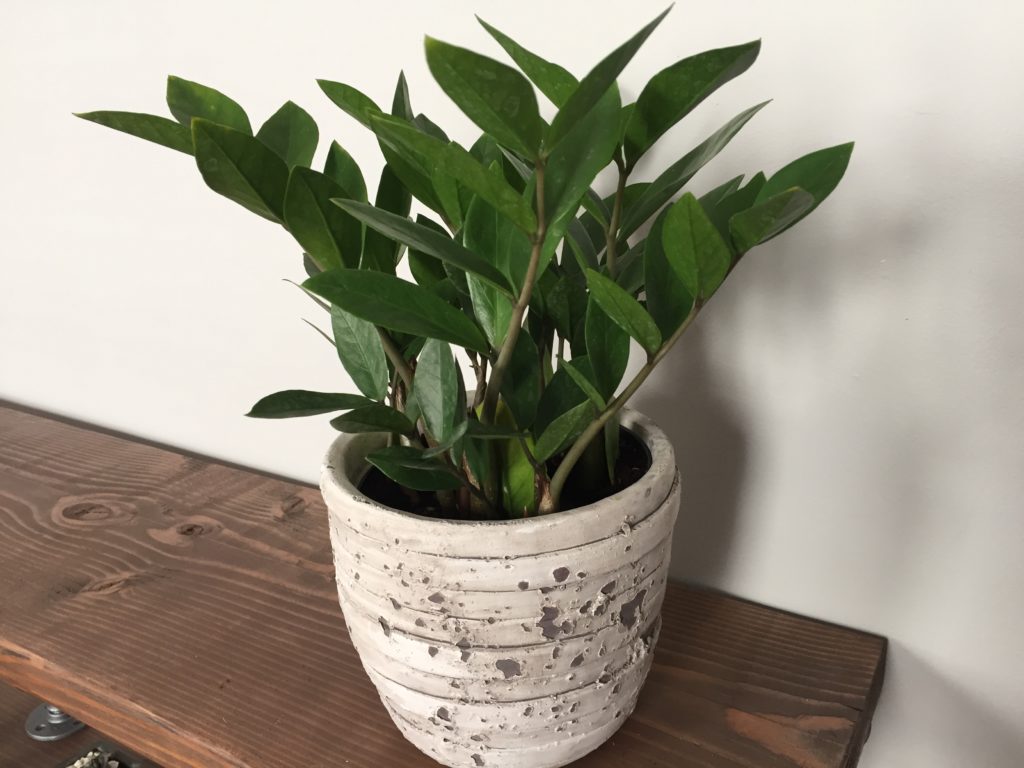
2. Peperomia
Light: Bright Water: Weekly. Care: Easy.
How could you not love those big, bright, round leaves? I found out about the Peperomia plant while wandering around my local nursery looking for something to fill a decorative wooden box I got as a gift. The color, leaf shape and waxy texture really appealed to me, so I gave it a whirl. Peperomia is very easy to care for (have you noticed a theme here?) – give it some bright light and water when they’re starting to get dry. My Peperomia are fairly drought tolerant – there are times when I’ve completely forgotten to water them and they’ve pulled through each time.
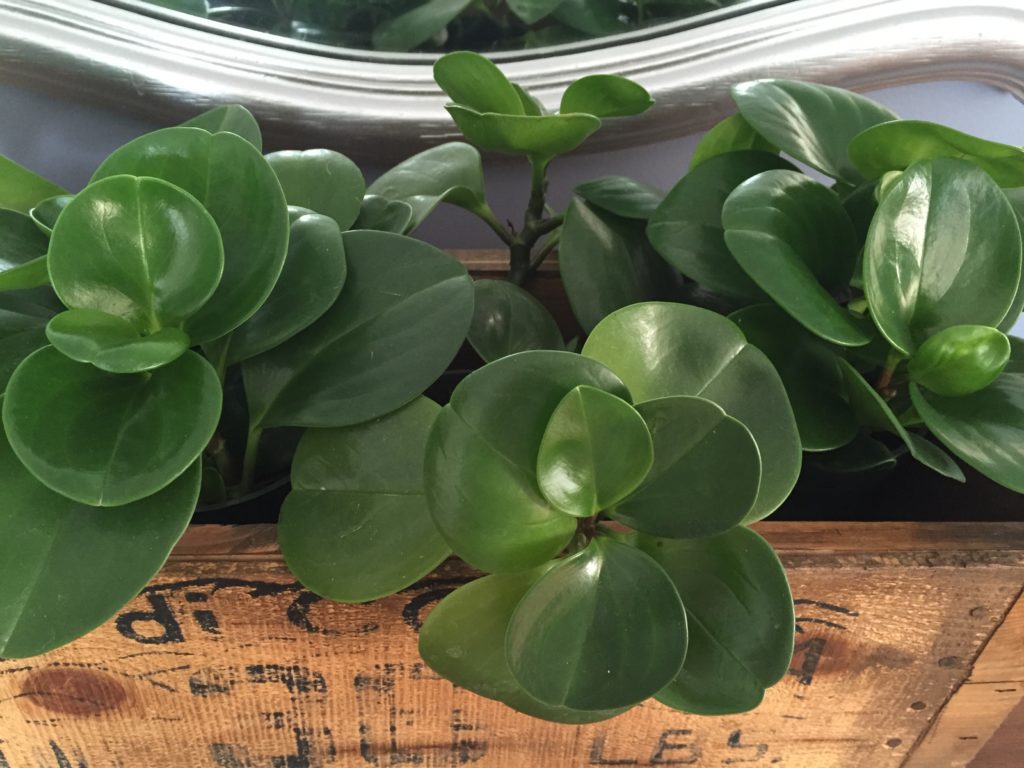
3. Chinese Evergreen
Light: Low-Medium. Water: Once every 1.5 weeks. Care: Easy.
My Chinese Evergreen (Aglaonema) is one of the easiest plants to care for. It doesn’t need a ton of light, which makes it the perfect way to add a bit of green to rooms that may receive a less than an ideal amount of natural light. They’re also fairly forgiving if you forget to water them for a few days. Not only is it easy to care for, it’s also pleasing to the eye. The leaves have a really lovely variegated pattern and they display nicely in a neat planter. Just be sure to keep this one away from pets as it’s toxic if ingested.
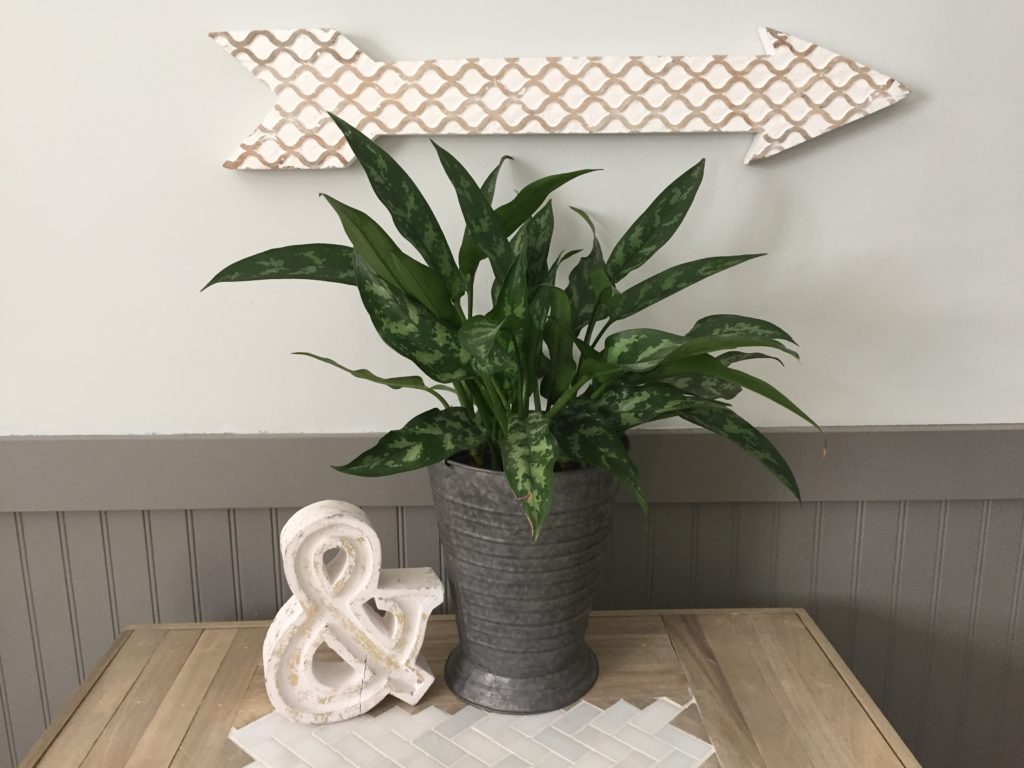
4. Fiddle Leaf Fig
Light: Bright-Filtered. Water: Weekly. Care: Medium.
I brought a Fiddle Leaf Fig home after searching for a unique tree-type plant that I could keep after two miserably failed attempts at growing a lemon tree indoors. The Fiddle Leaf Fig kept popping up and I was intrigued by the big, gorgeous green leaves they produced. Instead of buying a mature tree, I decided to start on a smaller (aka: less expensive) scale and nurture it into a larger specimen. I’ve read that they can be a bit finicky, but haven’t experienced many issues with mine. The worst thing you can do is over-water your fig. I give it a deep soak in the sink once a week, but only after the soil has had a chance to dry out in between. Another important part of their care is to mist and wipe down the leaves. Since they’re so large, they can collect dust, which will impair their ability to take in the bright, filtered light they need.
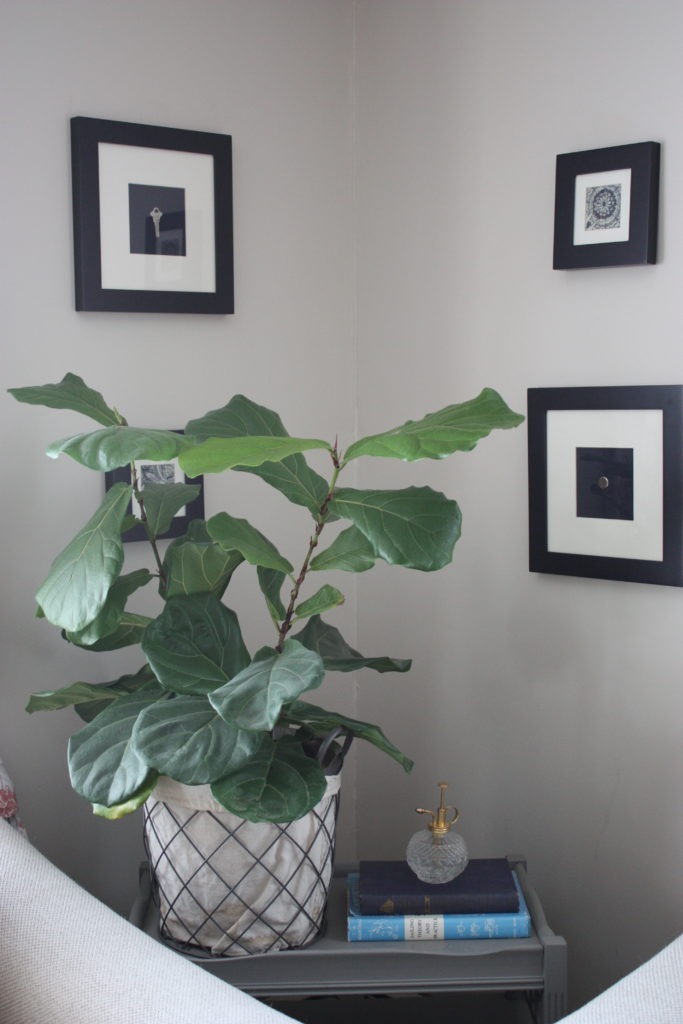
5. Succulents
Light: Medium. Water: Varies. Care: Medium.
Succulents have become super popular. I think a lot of the appeal, at least for me, is the amazing variety available. With so many interesting shapes, textures, colors and sizes, it’s almost impossible to not be able to find some that you like. In addition to plant diversity, there are so many creative and unique ways to display your succulents. They can be made to fit in easily to any style of decor and make great gifts for plant lovers. Though they often get touted as “easy to care for,” I’ve found that they can be a bit tricky. Make sure they’re planted in well draining “cactus” soil and place them in a spot where they get a moderate amount of sun and decent air circulation. If planting a bunch of little ones in one container, make sure they’re not overcrowded – they like personal space! Water only when they’ve completely dried out.
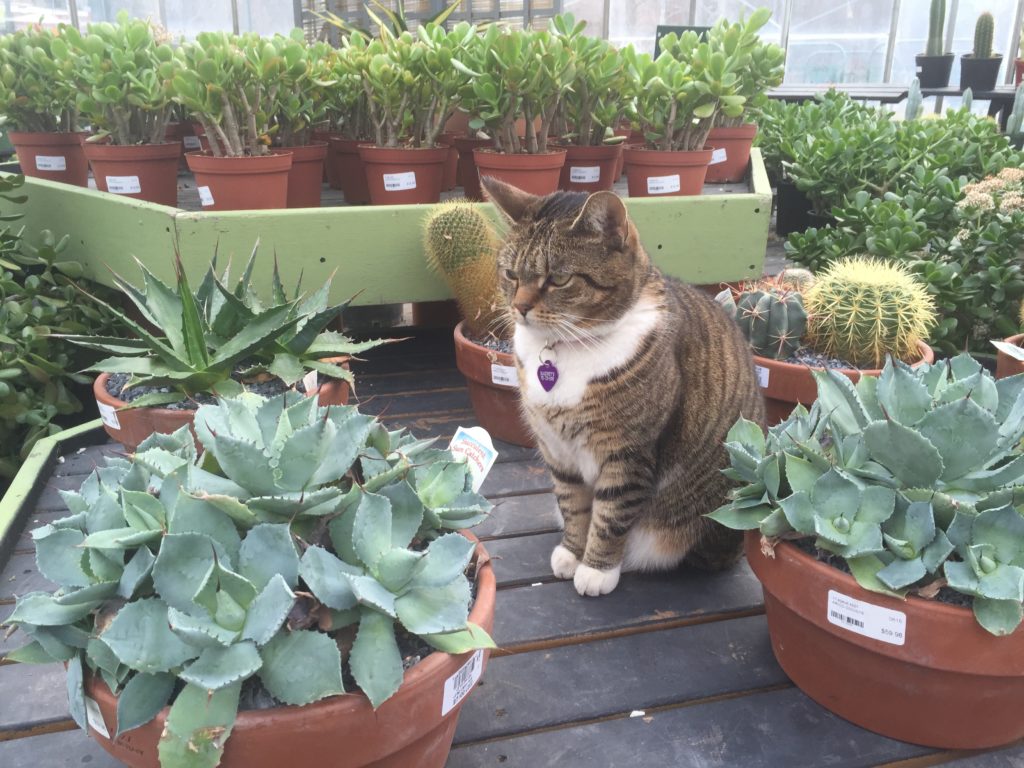
6. Potted Herbs
Light: Bright. Water: Every 2-3 days. Care: Easy.
There’s nothing like heading out to the garden in the summer to pick fresh herbs to use in meals. It’s something I sorely miss in the dead of winter, which is usually when I’ll keep a small set of herbs on my kitchen windowsill. Not only is it a way to add another touch of green, it can also help save money at the grocery store. A few $3 plants that you can keep for a while will end up costing less than the $3-$4 packages of herbs you need to buy for specific recipes. It’ll also minimize waste – there are times when I can’t use the entire contents of the package and it’ll end up going bad. With potted plants you can pick off what you need and it’ll keep growing. Care is pretty easy, make sure they have bright light and water every few days to keep the soil moist.
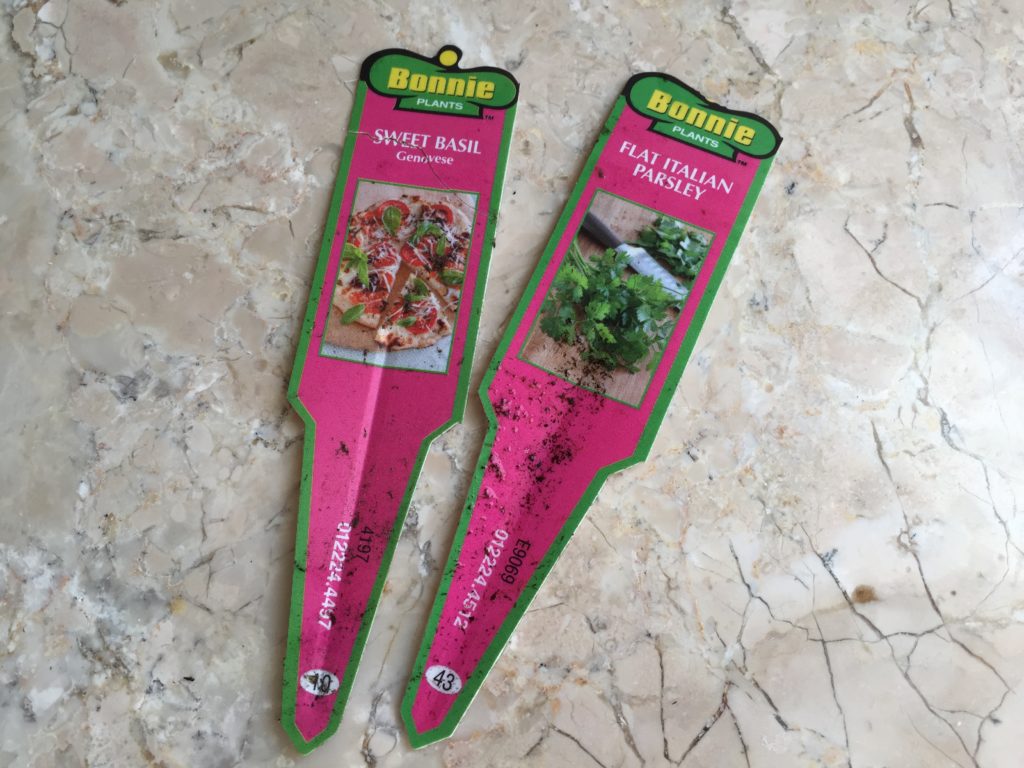
7. Staghorn Fern
Light: Medium-Filtered. Water: Weekly. Care: Medium-Hard.
These Staghorn Ferns are my newest additions! I fell in love with their enchanting foliage when I first learned about them. When I found out that they could be displayed on a wall, I was hooked. If you do end up hanging them, their care will be a bit more involved. You’ll need to give them a good soak in the tub (board and all) on a weekly basis and mist with a spray bottle daily, or as needed to maintain moisture. Staghorns typically grow in rainforests, so they like humidity. In a less ideal environment (aka: my dry house in the winter) they take a teeny bit more work to keep happy. It’s not unusual for me to keep a small humidifier on for them. While you can buy pre-mounted ferns, you can save yourself quite a bit of money and have a fun weekend project lined up if you decide to mount one on your own.
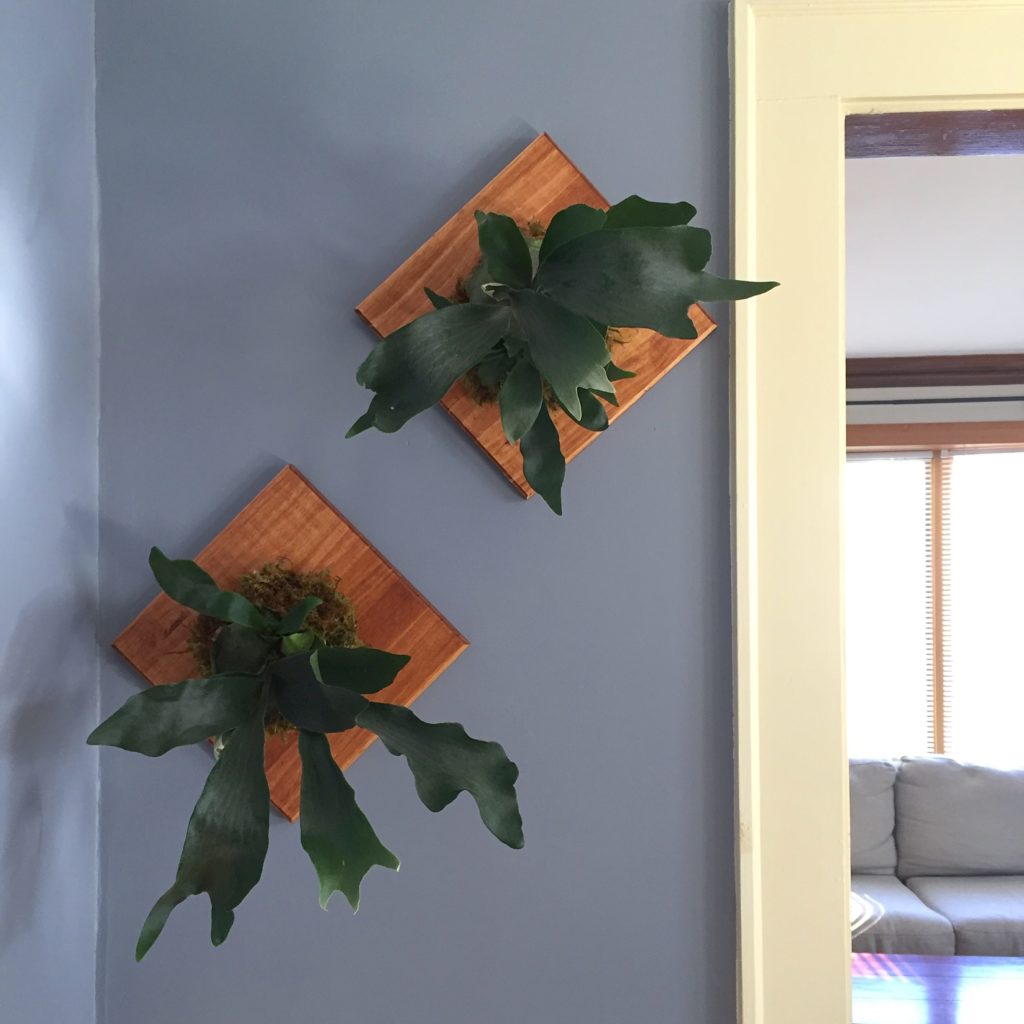
What are some of your favorite plants?

